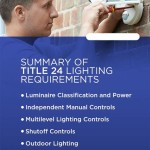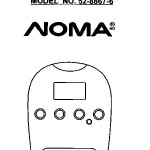How Much Lumens For An Outdoor Projector
Projecting movies or presentations outdoors provides a unique and engaging experience. However, achieving a vibrant and clear image under the open sky requires careful consideration of projector brightness, measured in lumens. This article explores the factors influencing lumen requirements for outdoor projectors and provides guidance for selecting the appropriate projector for various outdoor environments.
Ambient Light: The Primary Challenge
The biggest challenge for outdoor projection is ambient light. Unlike controlled indoor environments, outdoor spaces are subject to varying degrees of natural light, even at night. Moonlight, streetlights, and ambient light pollution from nearby buildings can significantly wash out the projected image. The brighter the ambient light, the higher the lumen output required from the projector to maintain image visibility and quality.
For instance, a projector used in a completely dark backyard might only need 1,000-2,000 lumens to produce a satisfactory image. However, the same projector used in an urban setting with significant light pollution might require 3,000 lumens or more to achieve a similar level of clarity.
Screen Size and Throw Distance: Impact on Brightness
Two other crucial factors influencing lumen requirements are screen size and throw distance. The larger the projected image, the more lumens are needed to maintain consistent brightness. Similarly, a longer throw distance (the distance between the projector and the screen) spreads the light over a larger area, reducing brightness. Therefore, projectors with longer throw distances typically require higher lumen outputs to compensate for this light dispersion.
A general rule of thumb is that for every foot of screen diagonal, approximately 25 lumens are needed for environments with some ambient light. So, a 100-inch screen in a moderately lit setting would benefit from a projector with around 2,500 lumens. This is a guideline, and specific requirements may vary depending on the projector's technology and the environment's light levels.
Projector Technology and Image Quality
Different projector technologies offer varying levels of brightness and color accuracy. DLP (Digital Light Processing) projectors are generally brighter than LCD (Liquid Crystal Display) projectors and are often preferred for outdoor use due to their higher contrast ratios, which enhance image clarity in ambient light. However, LCD projectors often offer more accurate color reproduction, which can be a desirable feature for presentations or displaying detailed images.
The ANSI lumens rating provides a standardized measurement of projector brightness, allowing for accurate comparisons between different models. When comparing projectors, it's essential to refer to the ANSI lumens rating rather than other metrics, which might not accurately reflect real-world performance.
Types of Outdoor Environments and Recommended Lumens
To simplify projector selection, consider these general recommendations based on typical outdoor environments:
- Completely Dark Environments: 1,000 - 2,000 lumens are typically sufficient for backyards with minimal light pollution.
- Moderately Lit Environments: 2,000 - 3,000 lumens are recommended for settings with some ambient light, such as a patio with nearby streetlights.
- Brightly Lit Environments: 3,000+ lumens are necessary for areas with substantial ambient light, such as urban environments or daytime viewing. Projectors with 4,000-5,000 lumens provide the best performance in these challenging conditions.
These are general guidelines, and specific lumen requirements may vary depending on the specific environment and the desired image quality.
Screen Material and Its Role in Brightness
The screen material plays a significant role in the perceived brightness of the projected image. A high-gain screen reflects more light back to the audience, effectively boosting the perceived brightness. This can be particularly beneficial in moderately lit environments, potentially allowing for the use of a lower-lumen projector. However, high-gain screens can have a narrower viewing angle, meaning the image quality degrades when viewed from the sides.
Conversely, a low-gain screen diffuses light more evenly, providing a wider viewing angle but potentially reducing the perceived brightness. Choosing the right screen material is crucial for optimizing the viewing experience and should be considered in conjunction with the projector's lumen output.
Testing and Adjustments for Optimal Viewing
Even with careful planning, it's essential to test the projector in the intended environment before a significant event. This allows for adjustments to the projector's placement, screen position, and image settings to achieve the optimal viewing experience. Factors such as ambient light levels can fluctuate, so testing under realistic conditions ensures the chosen projector meets the specific requirements of the outdoor setting.
Furthermore, consider the content being projected. Movies with dark scenes generally require higher lumens to maintain detail and contrast, while presentations with bright backgrounds can tolerate lower lumen outputs. Adjusting the projector's brightness and contrast settings during the test can further enhance image quality.

How Many Lumens For Outdoor Mini Portable Projectors Need Benq Us

How Many Lumens Do I Need For Outdoor Projector Wemax Official

Looking For An Outdoor Daytime Projector Benq Asia Pacific

How Many Lumens For Outdoor Projector Do You Need Ninja
How Many Lumens Do I Need For An Outdoor Projector Quora

How Many Lumens Are Needed For An Outdoor Projector Concept With Open Air Cinema Chairs And White Projection Screen Stock Photo Adobe

What To Know Before Outdoor Projectors Screens Projectorscreen Com

How To Convert Ansi Led And Light Source Lumen Benq Us

How Many Lumens Does My Projector Need

Etokfoks 1920 X 1080p Fhd Led White Projector For Outdoor With 8500 Lumens And Carrying Bag Mlsx03lt068 The Home Depot
Related Posts







